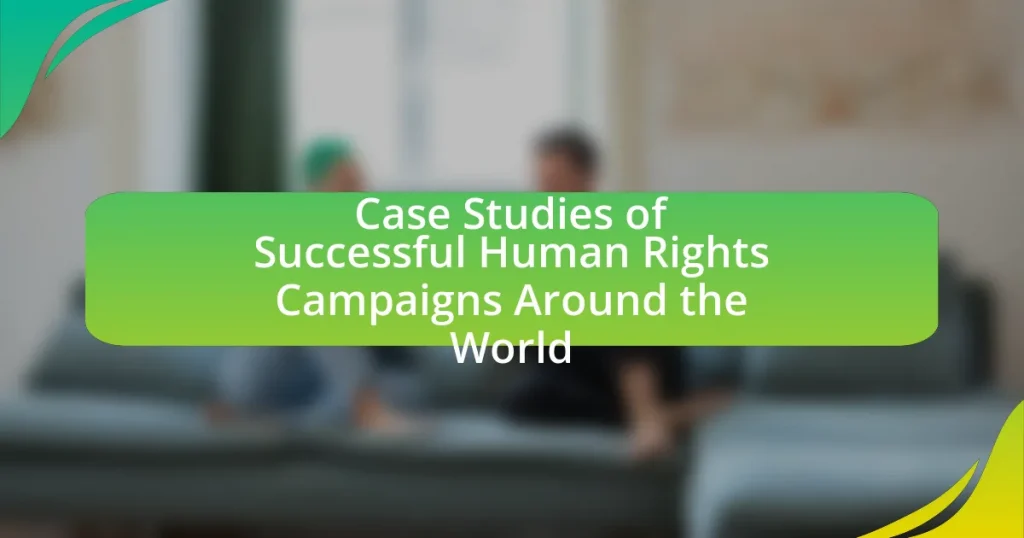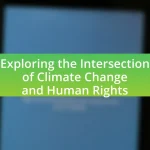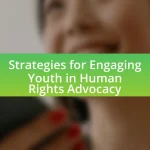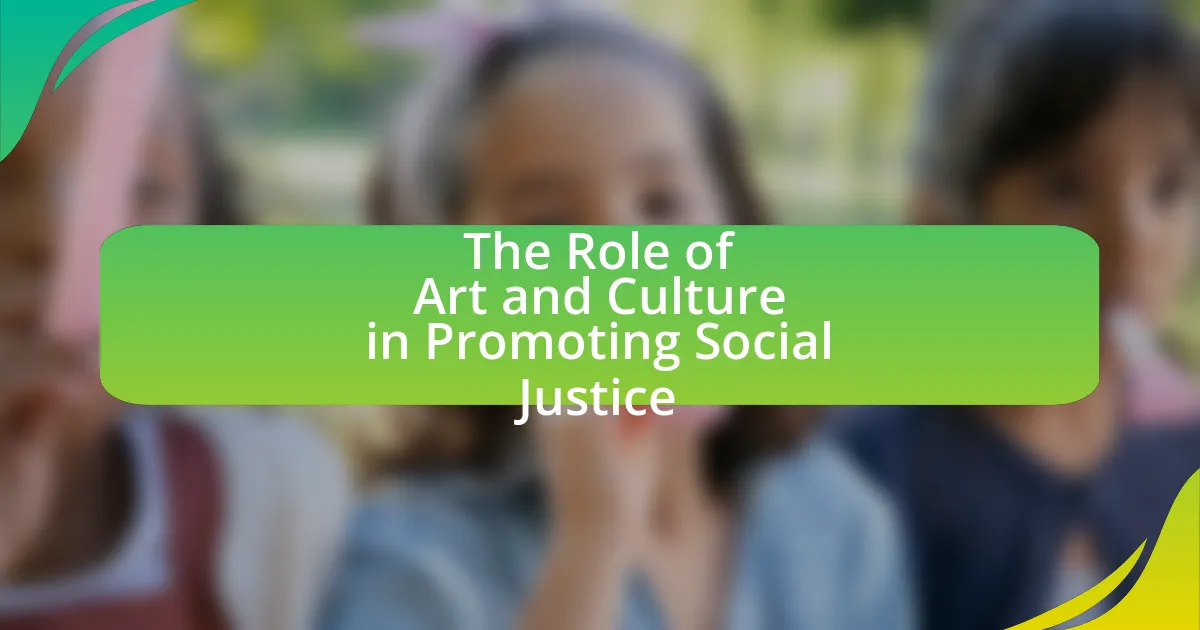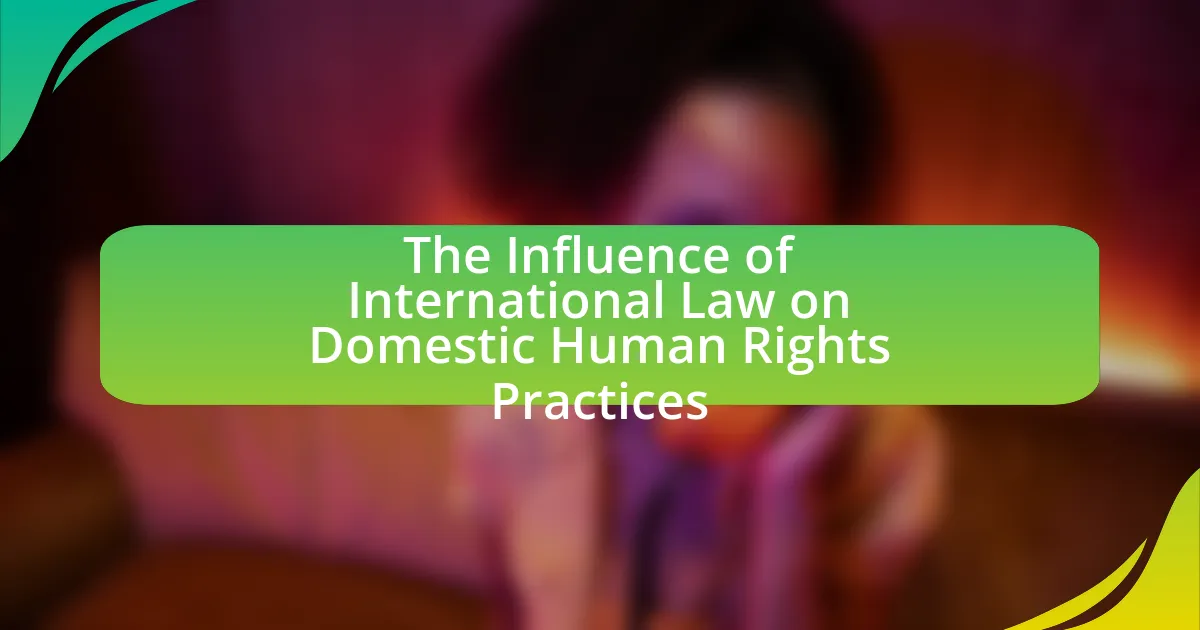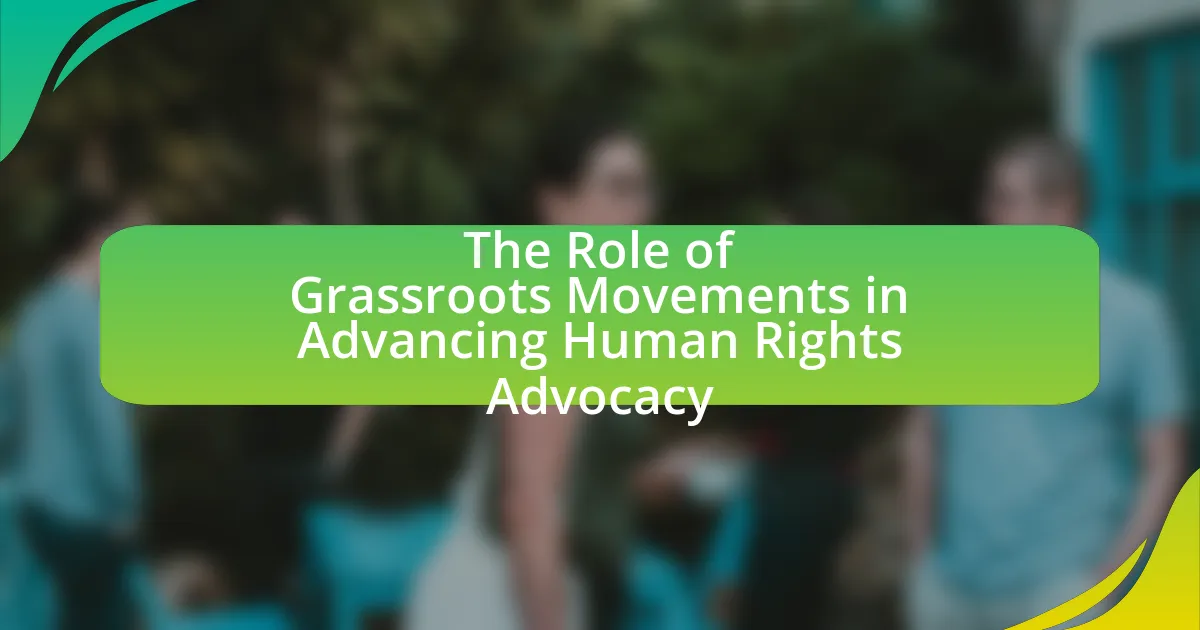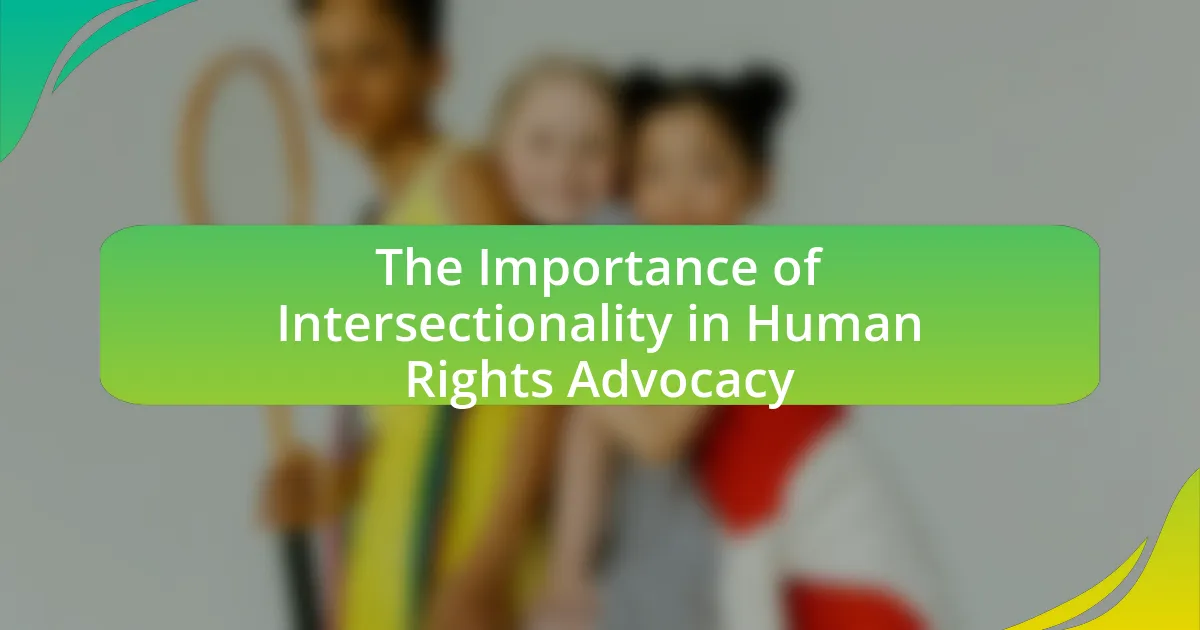The article focuses on case studies of successful human rights campaigns worldwide, highlighting organized efforts that advocate for the protection and promotion of human rights. It examines notable movements such as the Civil Rights Movement in the United States and the anti-apartheid movement in South Africa, detailing their strategies, definitions of success, and the metrics used to measure their impact. Additionally, the article explores the influence of cultural contexts, leadership, public engagement, and collaboration with NGOs and governments on the effectiveness of these campaigns, while also identifying best practices for future initiatives.
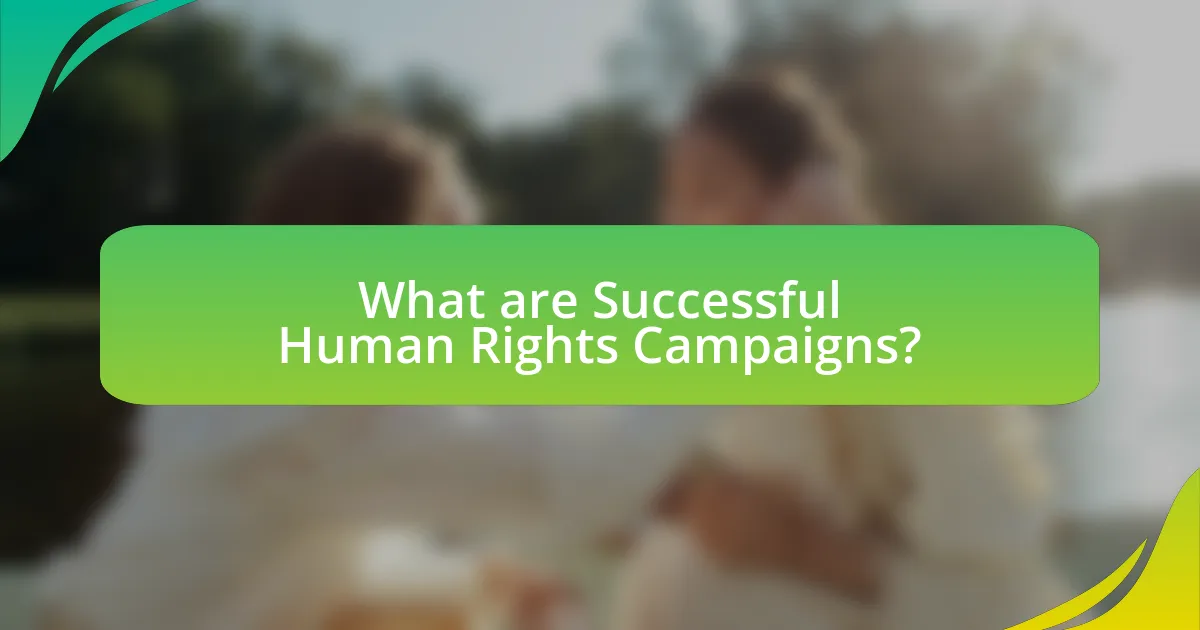
What are Successful Human Rights Campaigns?
Successful human rights campaigns are organized efforts that effectively advocate for the protection and promotion of human rights, leading to tangible changes in laws, policies, or societal attitudes. Notable examples include the Civil Rights Movement in the United States, which resulted in the Civil Rights Act of 1964, and the anti-apartheid movement in South Africa, which culminated in the end of apartheid and the establishment of a democratic government in 1994. These campaigns often utilize strategies such as grassroots mobilization, legal challenges, and international advocacy to achieve their goals, demonstrating the power of collective action in advancing human rights.
How do we define success in human rights campaigns?
Success in human rights campaigns is defined by the achievement of specific, measurable outcomes that lead to the protection and promotion of human rights. These outcomes can include the enactment of laws that safeguard rights, the cessation of human rights abuses, increased awareness and education about human rights issues, and the empowerment of marginalized communities. For instance, the abolition of apartheid in South Africa is a concrete example of success, as it resulted in significant legal and social changes that improved the rights of millions. Additionally, the establishment of the Universal Declaration of Human Rights in 1948 serves as a foundational benchmark for evaluating the success of various campaigns globally, as it set international standards for human rights that many campaigns strive to achieve.
What metrics are used to measure the success of these campaigns?
The metrics used to measure the success of human rights campaigns include awareness levels, engagement rates, policy changes, and fundraising outcomes. Awareness levels can be quantified through surveys and social media reach, indicating how many individuals are informed about the campaign’s objectives. Engagement rates are assessed by analyzing participation in events, online interactions, and volunteer involvement, reflecting the community’s response. Policy changes serve as a critical metric, as successful campaigns often lead to legislative or regulatory reforms, which can be tracked through government records. Fundraising outcomes are measured by the total amount of donations received, showcasing financial support and sustainability for ongoing efforts. These metrics collectively provide a comprehensive view of a campaign’s impact and effectiveness in promoting human rights.
How do cultural contexts influence the definition of success?
Cultural contexts significantly influence the definition of success by shaping values, beliefs, and societal norms that dictate what achievements are prioritized. For instance, in collectivist cultures, success may be defined by community well-being and harmony, while in individualistic cultures, personal achievement and self-fulfillment are often emphasized. Research by Hofstede (1980) highlights how cultural dimensions, such as individualism versus collectivism, directly impact perceptions of success, illustrating that success is not universally defined but rather varies according to cultural frameworks.
What are some common characteristics of successful human rights campaigns?
Successful human rights campaigns typically exhibit clear objectives, strong leadership, and effective communication strategies. Clear objectives ensure that the campaign has a focused goal, such as ending a specific injustice or advocating for policy changes. Strong leadership mobilizes resources and inspires supporters, as seen in campaigns led by figures like Nelson Mandela during the anti-apartheid movement. Effective communication strategies, including social media outreach and grassroots organizing, amplify the campaign’s message and engage a broader audience, as demonstrated by the #MeToo movement, which utilized social media to raise awareness about sexual harassment and assault. These characteristics contribute to the overall effectiveness and impact of human rights campaigns.
How do leadership and organization impact campaign success?
Leadership and organization significantly impact campaign success by providing direction, fostering collaboration, and ensuring effective resource allocation. Strong leadership establishes a clear vision and motivates team members, which is crucial for maintaining momentum in human rights campaigns. For instance, the leadership of Nelson Mandela during the anti-apartheid movement in South Africa galvanized international support and unified diverse groups towards a common goal. Additionally, well-structured organizations facilitate strategic planning and execution, as seen in Amnesty International’s systematic approach to advocacy, which has led to numerous successful campaigns for human rights. These elements combined create a robust framework that enhances the likelihood of achieving campaign objectives.
What role does public engagement play in these campaigns?
Public engagement is crucial in human rights campaigns as it mobilizes support, raises awareness, and influences policy change. Engaging the public fosters a sense of community and shared responsibility, which can amplify the impact of the campaign. For instance, the #MeToo movement gained momentum through widespread public participation, leading to significant changes in workplace policies and societal attitudes towards sexual harassment. This demonstrates that active public involvement not only enhances visibility but also drives legislative and social reforms, making it an essential component of successful human rights initiatives.
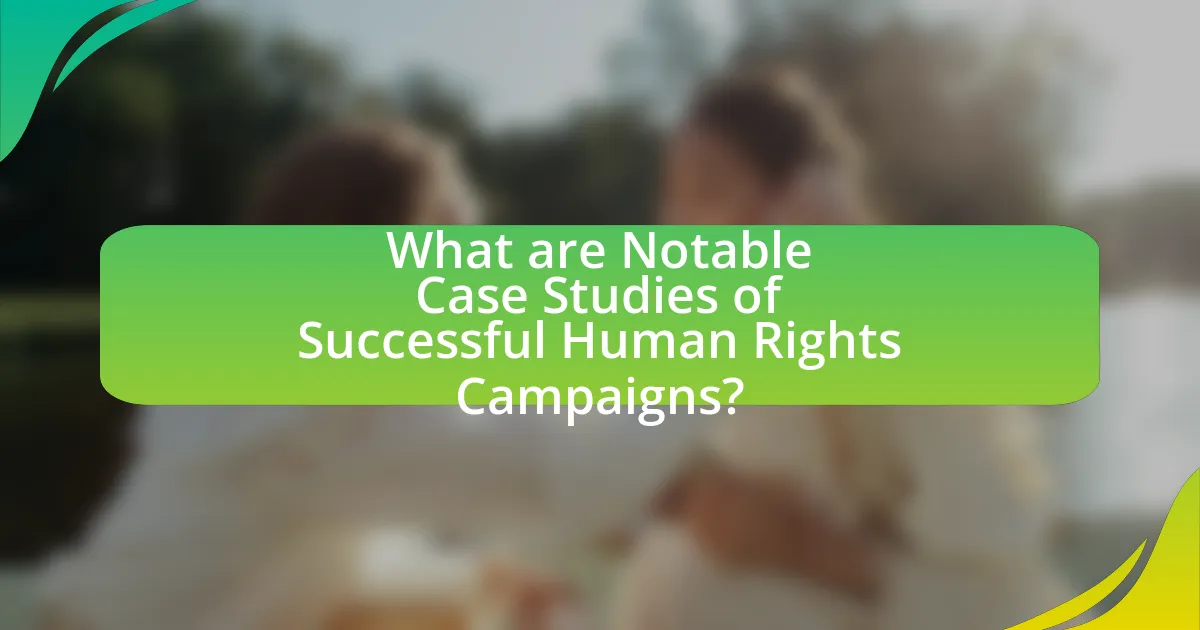
What are Notable Case Studies of Successful Human Rights Campaigns?
Notable case studies of successful human rights campaigns include the Civil Rights Movement in the United States, which aimed to end racial segregation and discrimination against African Americans, leading to significant legislative changes such as the Civil Rights Act of 1964. Another example is the anti-apartheid movement in South Africa, which successfully dismantled the apartheid regime and resulted in the election of Nelson Mandela as the first Black president in 1994. Additionally, the global campaign for LGBTQ+ rights has seen significant victories, such as the legalization of same-sex marriage in numerous countries, including the United States in 2015 through the Supreme Court ruling in Obergefell v. Hodges. These campaigns demonstrate the power of collective action and advocacy in achieving human rights advancements.
What lessons can we learn from the Civil Rights Movement in the United States?
The Civil Rights Movement in the United States teaches the importance of collective action and grassroots organizing in achieving social change. This movement, which spanned from the 1950s to the 1960s, demonstrated that sustained efforts by individuals and communities can lead to significant legislative and societal transformations, such as the Civil Rights Act of 1964 and the Voting Rights Act of 1965. These laws were direct outcomes of organized protests, legal challenges, and advocacy efforts that highlighted systemic injustices. The movement also emphasized the power of nonviolent resistance, as exemplified by figures like Martin Luther King Jr., whose strategies inspired future human rights campaigns globally.
What strategies were employed to mobilize support?
Successful human rights campaigns employed various strategies to mobilize support, including grassroots organizing, social media engagement, and coalition-building. Grassroots organizing involved local communities in advocacy efforts, fostering a sense of ownership and urgency. Social media engagement allowed campaigns to reach a broader audience quickly, facilitating the sharing of information and mobilizing supporters through viral content. Coalition-building brought together diverse groups, enhancing credibility and resource sharing, which was crucial for amplifying messages and increasing visibility. For instance, the #MeToo movement effectively utilized social media to mobilize millions globally, demonstrating the power of digital platforms in rallying support for human rights issues.
How did legal changes result from this movement?
Legal changes resulted from this movement by enacting new laws that protect human rights and promote equality. For instance, the civil rights movement in the United States led to the Civil Rights Act of 1964, which prohibited discrimination based on race, color, religion, sex, or national origin. This landmark legislation was a direct outcome of organized protests and advocacy, demonstrating the movement’s influence on legislative reform. Additionally, the movement prompted the establishment of legal frameworks that support marginalized groups, further solidifying the connection between activism and legal advancements.
How did the Anti-Apartheid Movement succeed in South Africa?
The Anti-Apartheid Movement succeeded in South Africa through a combination of grassroots activism, international pressure, and strategic negotiations. Grassroots organizations, such as the African National Congress (ANC) and the Pan Africanist Congress (PAC), mobilized mass protests, strikes, and civil disobedience, which raised awareness and galvanized public support against apartheid policies. Internationally, economic sanctions and divestment campaigns from countries and organizations pressured the South African government to reform. Notably, the United Nations imposed an arms embargo in 1977, further isolating the apartheid regime. The culmination of these efforts led to negotiations in the early 1990s, resulting in the dismantling of apartheid laws and the establishment of a democratic government, marked by Nelson Mandela’s election as president in 1994.
What international support was crucial for this campaign?
International support from various human rights organizations and foreign governments was crucial for this campaign. Notably, the involvement of Amnesty International and Human Rights Watch provided essential advocacy and visibility, which helped mobilize global public opinion. Additionally, diplomatic pressure from countries such as Canada and the European Union facilitated negotiations that led to significant policy changes. These organizations and governments played a pivotal role in amplifying the campaign’s message and ensuring accountability for human rights violations.
How did grassroots activism contribute to its success?
Grassroots activism significantly contributed to the success of human rights campaigns by mobilizing local communities and fostering widespread participation. This grassroots involvement created a strong sense of ownership and urgency among individuals, leading to increased visibility and support for the cause. For instance, the Civil Rights Movement in the United States saw local activists organizing protests, sit-ins, and voter registration drives, which were crucial in challenging systemic racism and influencing legislation, such as the Civil Rights Act of 1964. The collective efforts of grassroots activists not only raised awareness but also pressured policymakers to enact change, demonstrating the power of community-driven initiatives in achieving human rights objectives.
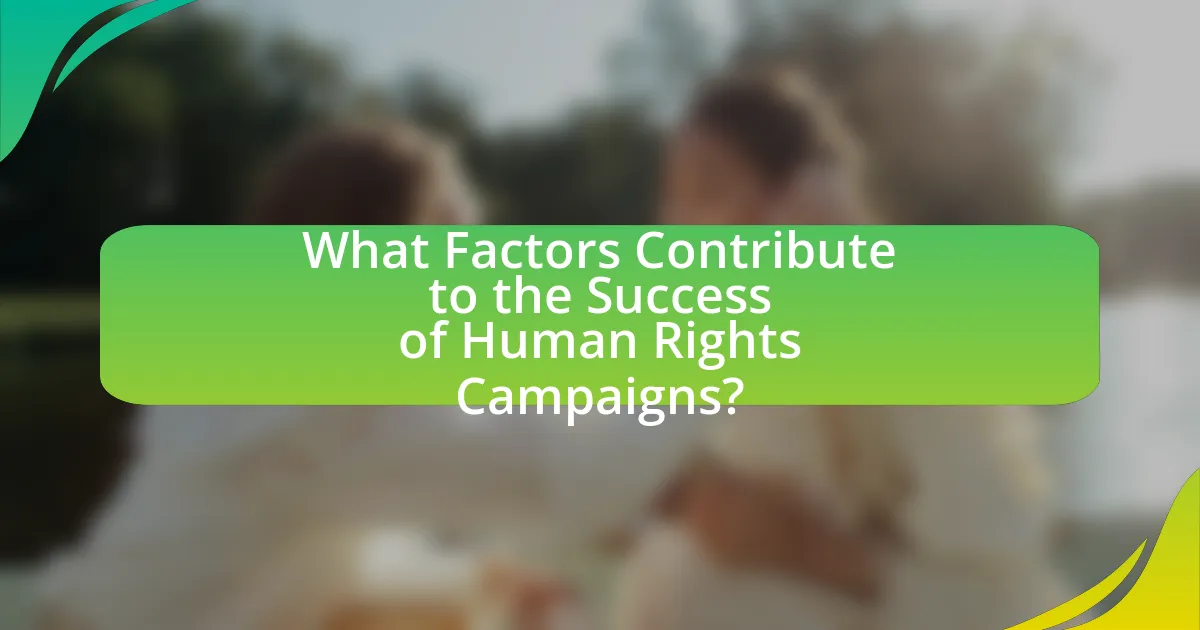
What Factors Contribute to the Success of Human Rights Campaigns?
The success of human rights campaigns is primarily influenced by effective advocacy strategies, public awareness, and coalition-building. Effective advocacy strategies, such as targeted messaging and strategic use of social media, enable campaigns to reach broader audiences and mobilize support. Public awareness is crucial, as campaigns that successfully educate the public about human rights issues tend to garner more support; for instance, the Ice Bucket Challenge raised over $115 million for ALS research by effectively raising awareness. Coalition-building among diverse groups enhances credibility and resource sharing, as seen in the global response to the Black Lives Matter movement, which united various organizations and individuals to amplify their message. These factors collectively contribute to the overall impact and success of human rights campaigns.
How does the use of social media enhance campaign effectiveness?
The use of social media enhances campaign effectiveness by facilitating rapid communication and broadening audience reach. Social media platforms allow campaigns to disseminate information quickly, engage with supporters in real-time, and mobilize grassroots efforts. For instance, the #MeToo movement utilized Twitter to amplify voices and share personal stories, resulting in widespread awareness and significant societal impact. Research indicates that campaigns leveraging social media can increase engagement rates by up to 50%, demonstrating its power in driving participation and support.
What platforms are most effective for human rights advocacy?
Social media platforms, particularly Twitter and Facebook, are the most effective for human rights advocacy. These platforms enable rapid dissemination of information, mobilization of supporters, and real-time engagement with global audiences. For instance, the #BlackLivesMatter movement gained significant traction through Twitter, where it facilitated discussions and organized protests, demonstrating the power of social media in amplifying human rights issues. Additionally, Facebook’s ability to create event pages and groups has proven instrumental in organizing grassroots campaigns, as seen in various global movements advocating for social justice.
How does online engagement translate to offline action?
Online engagement translates to offline action by mobilizing individuals to participate in real-world activities, such as protests or community organizing. For instance, social media campaigns can raise awareness about human rights issues, leading to increased attendance at rallies or events. A study by the Pew Research Center found that 69% of social media users have engaged in offline activities as a result of online advocacy, demonstrating a direct correlation between digital engagement and physical participation. This indicates that effective online strategies can significantly influence and drive collective action in the physical world.
What role does collaboration with NGOs and governments play?
Collaboration with NGOs and governments plays a crucial role in enhancing the effectiveness and reach of human rights campaigns. This partnership allows for the pooling of resources, expertise, and networks, which can lead to more comprehensive strategies and greater impact. For instance, the collaboration between Amnesty International and various governments has led to significant policy changes and the implementation of human rights protections in multiple countries. Such alliances can also facilitate access to funding and logistical support, enabling campaigns to operate on a larger scale and address systemic issues more effectively.
How can partnerships amplify the impact of human rights campaigns?
Partnerships can amplify the impact of human rights campaigns by leveraging diverse resources, expertise, and networks to reach broader audiences and enhance advocacy efforts. For instance, collaborations between NGOs, governmental bodies, and private sectors can combine financial support, strategic knowledge, and grassroots mobilization, resulting in more effective campaigns. A notable example is the partnership between Amnesty International and local organizations during the “Write for Rights” campaign, which mobilized millions globally, leading to significant policy changes and increased awareness of human rights issues. This demonstrates that strategic alliances can create a multiplier effect, enhancing visibility and effectiveness in addressing human rights violations.
What challenges arise in these collaborations?
Collaborations in human rights campaigns face several challenges, including differing organizational goals, resource allocation issues, and communication barriers. These challenges can lead to conflicts in priorities, making it difficult for organizations to align their strategies effectively. For instance, a study by the International Human Rights Funders Group highlights that misaligned objectives can hinder collaborative efforts, resulting in wasted resources and diminished impact. Additionally, varying levels of expertise and experience among partners can create disparities in contributions, complicating the collaboration process. Communication barriers, whether due to language differences or cultural misunderstandings, further exacerbate these issues, often leading to misinterpretations and reduced cooperation.
What best practices can be adopted for future human rights campaigns?
Future human rights campaigns should adopt a multi-faceted approach that includes grassroots mobilization, strategic partnerships, and data-driven advocacy. Grassroots mobilization empowers local communities, as seen in the Black Lives Matter movement, which effectively utilized social media to organize protests and raise awareness. Strategic partnerships with NGOs, governments, and private sectors can amplify efforts, as demonstrated by the collaboration between Amnesty International and local organizations to address specific human rights issues. Data-driven advocacy, supported by research from organizations like Human Rights Watch, provides concrete evidence to influence policy changes and public opinion, ensuring campaigns are grounded in factual realities.
How can campaigns effectively measure their impact?
Campaigns can effectively measure their impact by utilizing a combination of quantitative and qualitative metrics. Quantitative metrics include tracking changes in awareness levels, engagement rates, and behavioral shifts among the target audience, often assessed through surveys and analytics tools. For instance, a campaign may measure the increase in social media shares or website visits as indicators of heightened awareness. Qualitative metrics involve gathering feedback through interviews and focus groups to understand the emotional and cognitive responses of participants. Research shows that campaigns employing both types of metrics can provide a comprehensive view of their effectiveness, as evidenced by the success of the Ice Bucket Challenge, which raised over $115 million for ALS research and significantly increased public awareness of the disease.
What strategies ensure sustained engagement and support?
Sustained engagement and support in human rights campaigns are ensured through strategies such as building strong community networks, leveraging social media for outreach, and maintaining transparency in communication. Strong community networks foster a sense of belonging and shared purpose, which is crucial for long-term commitment. For instance, the Black Lives Matter movement effectively utilized local chapters to engage communities and mobilize support across various regions. Social media platforms amplify messages and facilitate real-time interaction, as seen in the #MeToo movement, which gained global traction through viral sharing and solidarity. Transparency in communication builds trust and accountability, exemplified by organizations like Amnesty International, which regularly updates supporters on campaign progress and challenges. These strategies collectively create a robust framework for ongoing engagement and support in human rights initiatives.
